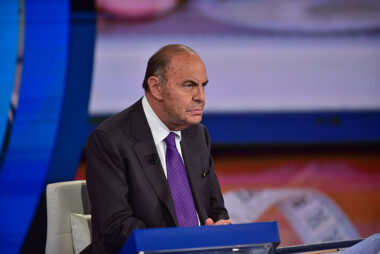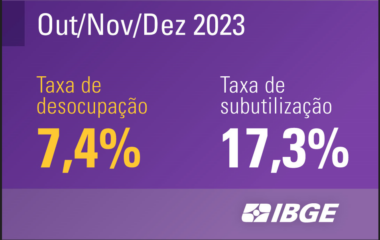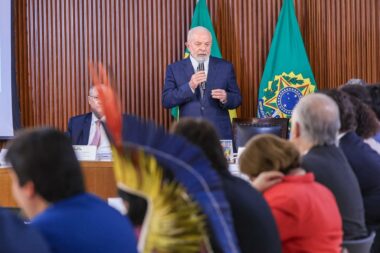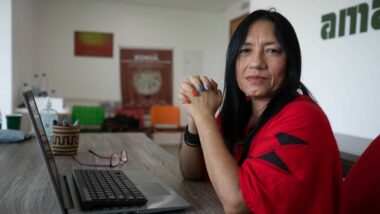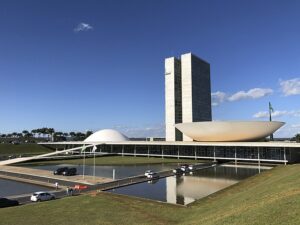Climate change could make coffee production in Brazilian southeast impossible
According to Michelle Simões Reboita, PhD in Meteorology and Professor of the Atmospheric Sciences course at the Federal University of Itajubá

By João Marcelo
SAO PAULO – “There are studies that show that if you increase the temperature in the Southeast by five degrees and reduce the volume of rainfall, coffee crops will be seriously compromised because they will not have conditions both in São Paulo and in Minas Gerais for this type of crop. The southern states of Brazil will be able to grow coffee”, says in an interview with Dire, Michelle Simões Reboita, PhD in Meteorology and Professor of the Atmospheric Sciences course at the Federal University of Itajubá.
The teacher says that the greenhouse effect has always existed and that if it didn’t exist, the temperature on earth would be on average minus 15 degrees Celsius. However, the researcher claims that human activities are taking this balance out of the way and are injecting more and more gases that increase this effect and that the effects are already being felt. “We have evidence of that. Evidence from increased temperatures recorded at meteorological stations and by satellite sensors. Here in Brazil in June and July we went through three episodes of cold. This is quite different from what we are used to. We are observing extreme phenomena, which are occurring more and more intensely and frequently.”
The effects of the changes will be felt in several different ways, as explained by Reboita. “The models indicate that there is increased rainfall in southern Brazil, Uruguay and northern Argentina, for example, and a deficit in the Amazon region, and this is a problem because much of the moisture we have in the Amazon is transported by winds to the Southeast of Brazil. This can impact the rainy season in the Southeast”. According to the researcher, this is very dangerous because this region is located in a transition zone between the atmospheric systems of higher latitudes and tropical latitudes, so it is an area that suffers from both systems. So if the Amazon is impacted, the Southeast also suffers. This lack of rain and the increase in temperature can lead to the impossibility of growing coffee in the Southeast, which is the region that produces the most coffee in Brazil, both for the domestic market and for export.
According to Professor Reboita, this problem still has a solution, but a global effort will be needed so that we can reduce the impacts we are already feeling. “What we can do is reduce emissions. If we reduce emissions in the long term, we will be able to return to the average temperature we had before. The planet’s temperatures are already around 1.5 degrees above the normal value .” completed Reboita.
REBOITA (RICERCATRICE): “IN BRASILE A RISCHIO LA PRODUZIONE DI CAFFÈ”
Di João Marcelo
SAN PAOLO DEL BRASILE – “Ci sono studi che mostrano che se la temperatura media nella regione del Sud-est del Brasile dovesse aumentare di cinque gradi e si dovesse ridurre il volume delle piogge, le colture di caffè saranno seriamente compromesse, perché non ci saranno le condizioni per questo tipo di coltivazione tanto nel San Paolo che nel Minas Gerais, i due Stati del sud del Paese dove si può coltivare la pianta”. A parlare con l’agenzia Dire è Michelle Simões Reboita, ricercatrice in meteorologia e docente di Scienze atmosferiche dell’Università federale di Itajubá, nel Minas Gerais. La docente premette che il cosiddetto effetto serra è sempre esistito e se così non fosse stato, la terra farebbe registrare in media una temperatura di 15 gradi sotto zero. Ciò detto, la ricercatrice afferma che l’attività umana sta portando questo equilibrio al limite, emettendo sempre più gas inquinanti, e che gli effetti di questa dinamica già si stanno facendo sentire.
“Abbiamo prove di questo, che deduciamo dall’aumento delle temperature che registriamo nelle stazioni metereologiche e grazie ai sensori satellitari”, evidenzia Reboita. “Qui in Brasile, nei mesi di giugno e luglio, abbiamo attraversato tre fasi di freddo. qualcosa di molto diverso da quello a cui siamo abituati. Stiamo osservando fenomeni estremi, che si stanno verificando in modo sempre più intenso e frequente”.
Gli effetti dei cambiamenti si faranno sentire in forme differenti, spiega la professoressa: “I modelli indicano che ci sarà un aumento delle precipitazioni nella regione del Sud del Brasile, in Uruguay e nel nord dell’Argentina, mentre una diminuzione nella regione amazzonica. Questo – prosegue Reboita – è un problema perché molta dell’umidità che arriva in Amazzonia è trasportata dai venti attraverso il Sud-est del Paese. Questa dinamica può quindi avere un impatto sulla stagione delle piogge nella regione”.
Secondo la ricercatrice, questa tendenza è molto pericolosa visto che l’area in questione si situa in una zona di transizione tra sistemi atmosferici di latitudine più alta e latitudine tropicale, ed è quindi un’area che soffre di entrambi i sistemi. Quando l’Amazzonia è colpita, anche il Sud-est soffre. La carenza di precipitazioni e l’aumento della temperatura media potrebbe rendere impossibile coltivare il caffè nella regione, che è quella più produttiva del Brasile per quanto riguarda la pianta, tanto a livello di mercato interno che a livello di esportazioni.
Reboita afferma che questo problema si può ancora risolvere, ma che sarà necessario uno sforzo globale affinché si possano ridurre gli impatti che il mondo sta già avvertendo. “Quello che possiamo fare è ridurre le emissioni. Se ci riusciamo sul lungo periodo ci troveremo nelle condizioni di tornare alla temperatura media che si registrava prima. A oggi queste si trovano già quasi 1,5 gradi sopra il valore normale”, conclude la docente.
MUDANÇAS CLIMÁTICAS PODEM IMPOSSIBILITAR A PRODUÇÃO DE CAFÉ NO SUDESTE, DIZ DOUTORA EM METEOROLOGIA
SAO PAULO – “Há estudos que mostram que se aumentar em cinco graus a temperatura no Sudeste e reduzir o volume das chuvas as culturas de café vão estar seriamente comprometidas porque não vão ter condições tanto em São Paulo quanto em Minas Gerais para esse tipo de cultura. Os estados do sul do Brasil que vão estar aptos aptos ao plantio do café”, é o que conta em entrevista a Dire, Michelle Simões Reboita Doutora em Meteorologia e Professora do curso de Ciências Atmosféricas da Universidade Federal de Itajubá.
A professora conta que o efeito estufa sempre existiu e que se não houvesse ele, a temperatura na terra seria em média 15 graus celsius negativos. Entretanto, a pesquisadora afirma que as atividades humanas estão tirando esse equilíbrio e estão injetando cada vez mais gases que aumentam esse efeito e que os efeitos já estão sendo sentidos. “Nós temos evidências disso. Evidências através do aumento das temperaturas registradas nas estações meteorológicas e por sensores de satélites. Aqui no Brasil no mês de junho e julho nós passamos por três episódio de frio. Isso é bem diferente do que nós estamos acostumados. Estamos observando fenômenos extremos, que estão ocorrendo de forma cada vez mais intensa e frequente.”
Os efeitos das mudanças vão ser sentidos de diversas formas diferentes, como explica Reboita. “Os modelos indicam que há aumento das chuvas na Região Sul do Brasil, Uruguai e norte da Argentina por exemplo, e déficit na região amazônica e isso é um problema porque muito da umidade que nós temos na Amazônia é transportada pelos ventos para o Sudeste do Brasil. Isso pode impactar na estação chuvosa no Sudeste”. De acordo com a pesquisadora, isso é muito perigoso pois essa região se situa numa zona de transição entre os sistemas atmosféricos de latitudes mais altas e latitudes tropicais, então é uma área que sofre com ambos os sistemas. Logo se a Amazônia é impactada, o Sudeste sofre também. Essa falta de chuva e o aumento da temperatura podem levar a impossibilidade do cultivo de café no sudeste, que é a região que mais produz café no Brasil, tanto para o mercado interno como para exportação.
De acordo com a professora Reboita, esse problema ainda tem solução, mas será preciso um esforço global para que possamos reduzir os impactos que já estamos sentindo. “O que a gente pode fazer é reduzir as emissões. Se reduzirmos as emissões a longo prazo nós vamos ter uma condição de voltar à temperatura média que nós tínhamos antes. As temperaturas do planeta já estão cerca de 1,5 grau acima do valor normal.” concluiu a Doutora em meteorologia.
Le notizie del sito Dire sono utilizzabili e riproducibili, a condizione di citare espressamente la fonte Agenzia DIRE e l’indirizzo www.dire.it



